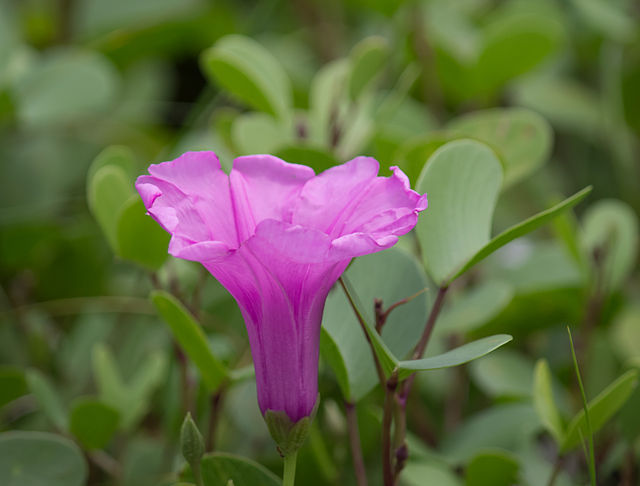Ipomoea pes-caprae, also known as bayhops, bay-hops, beach morning glory, railroad vine, or goat's foot, is a common pantropical creeping vine belonging to the family Convolvulaceae. It grows on the upper parts of beaches and endures salted air. It is one of the most common and most widely distributed salt tolerant plants and provides one of the best known examples of oceanic dispersal. Its seeds float and are unaffected by salt water.
Ipomoea pes-caprae
Ipomoea pes-caprae in China
Stabilising the sands just above high tide mark, Uthandi Beach, Chennai
Vines on a pebble beach
A beach is a landform alongside a body of water which consists of loose particles. The particles composing a beach are typically made from rock, such as sand, gravel, shingle, pebbles, etc., or biological sources, such as mollusc shells or coralline algae. Sediments settle in different densities and structures, depending on the local wave action and weather, creating different textures, colors and gradients or layers of material.
Recreational beaches, such as this one in Fort Lauderdale, Florida
St Oswalds Bay, Dorset, England. Wild sand and shingle beaches are shaped and maintained naturally by wave actions.
Marine debris on a beach in Hawaii.
Quartz sand particles and shell fragments from a beach. The primary component of typical beach sand is quartz, or silica (SiO2).








